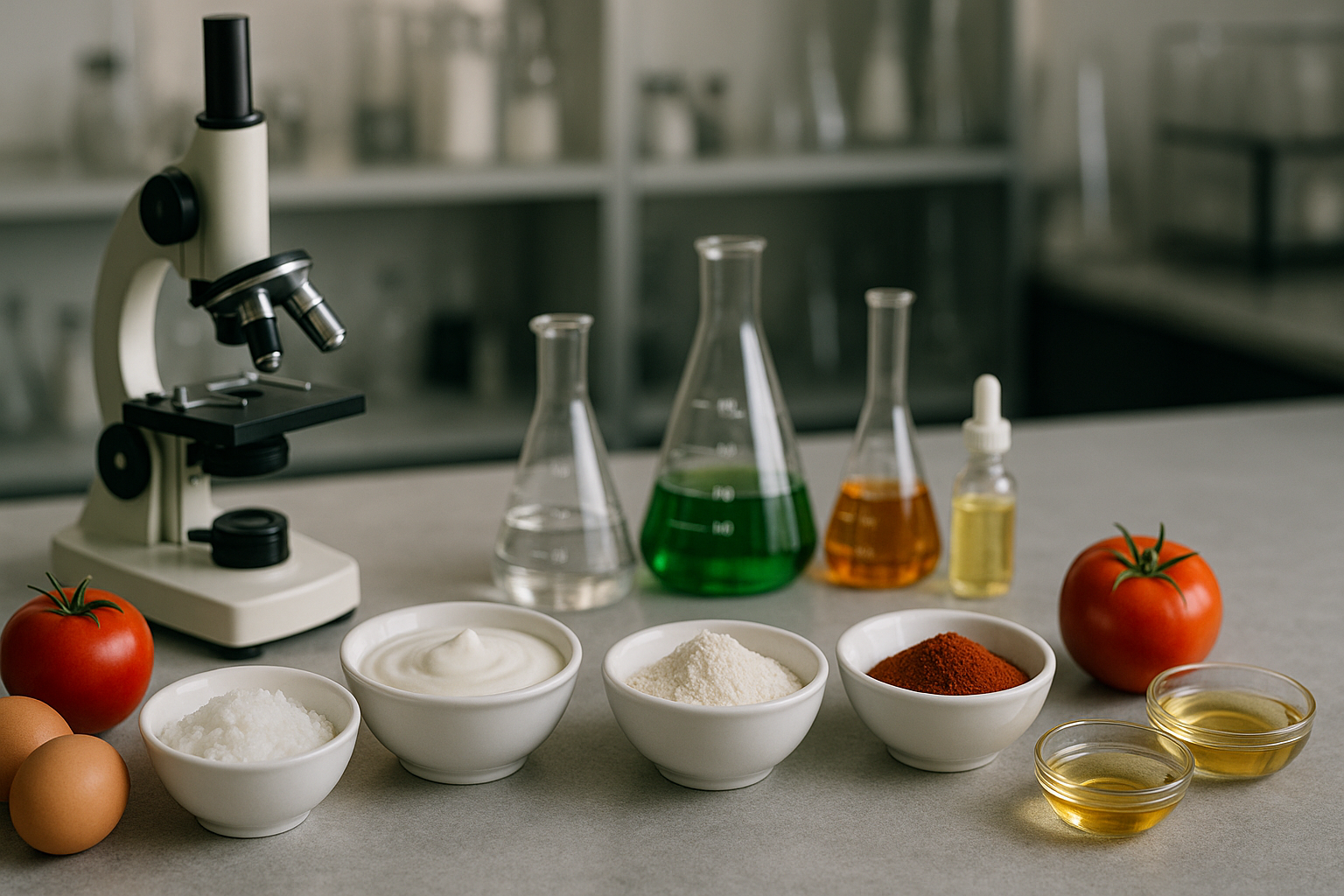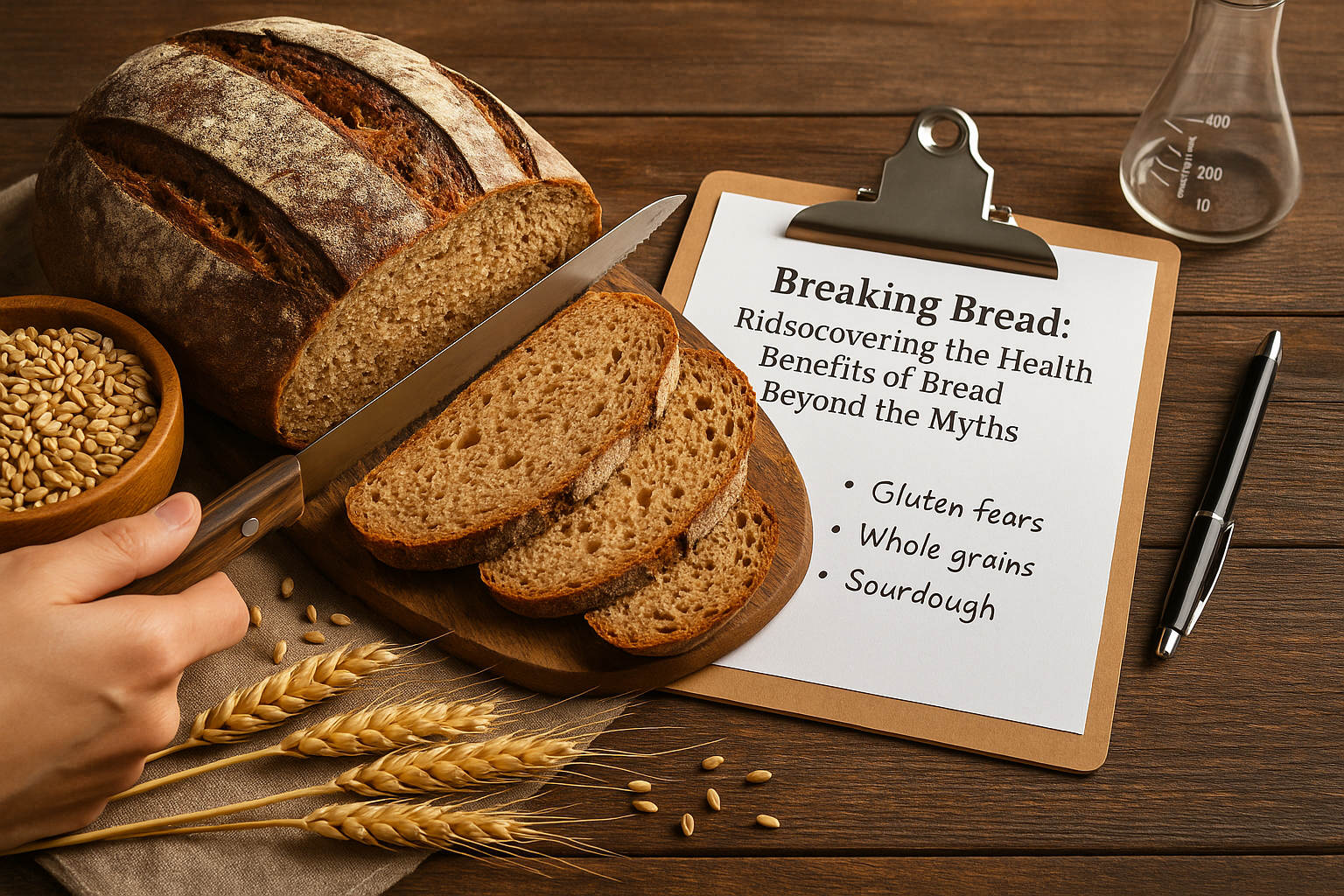
Konjac Powder vs. Xanthan Gum: What’s the Difference in 2023?
SUBSCRIBE TO OUR BLOG
Promotions, new products, and recipes.
ABOVE: The porang plant tuber, Amorphophallus also known as konjac elephant yam konjac, Konjaku, Konnyaku Potato, devil tongue, voodoo lily which konjac powder is made.
Picture this: you’re whipping up a culinary masterpiece, and you need a thickening agent to create the perfect consistency. You reach for your trusty konjac powder or xanthan gum, but then you wonder - what’s the difference between these two mysterious ingredients, and are they interchangeable? Fret not, dear reader, for today we embark on a journey to unravel the secrets of konjac powder vs xanthan gum and discover their unique powers in the kitchen and beyond!
Key Takeaways
-
Konjac powder and xanthan gum are a dynamic duo of thickening agents that work together to optimize food products!
-
Konjac powder is a superfood with health benefits, while Xanthan Gum offers slimy texture and heat-stable dishes.
-
Spice up your cooking & baking by exploring other alternatives for infinite culinary possibilities!
Understanding Konjac Powder and Xanthan Gum

Konjac Gum Powder (Glucomannan Powder) and Xanthan Gum Powder.
Xanthan gum and konjac powder are two water-soluble polysaccharides, often utilized as nonionic thickeners in the food industry. They’re soluble dietary fibers that act like thickening agents when added to starch-rich formulations or meat emulsion products, stopping them from separating. Konjac hails from a plant known for its natural source of dietary fiber, while xanthan is created via bacterial fermentation techniques giving it unique properties beneficial for suspending and stabilizing ingredients used in food production processes too! Both these culinary heroes have their place within the realm of thickening solutions so why not delve deeper into what makes each one special?
Origin and Composition of Konjac Powder
Konjac powder is derived from the mysterious konjac plant, a perennial herb that grows naturally in Asia. It consists mostly of glucomannan (KGM), which is an example of polysaccharide and it’s pulled out from underground tubers. This kitchen superhero supplies remarkable rewards for your well-being when included as part of your diet plan: promoting digestive system health and regularity, decreasing cholesterol levels, and assisting with weight loss because it can replace fat or sugar found in meat products, ice cream, and dairy items while providing much needed dietary fiber. Konjac Powder certainly offers many advantages!
Origin and Composition of Xanthan Gum
Xanthan gum is a powerful and mysterious thickening agent derived from bacterial fermentation, differentiating it from plant-based konjac powder. This hydrophilic substance quickly dissolves in cold water and loves absorbing it, stirring too slowly or insufficiently can result in the xanthan gum puffing up like a cloud! It’s no surprise that this special component has become popular for creating delicious recipes such as baking goods with its stabilizing properties.
Health Benefits and Nutritional Profiles

Konjac powder and xanthan gum are both incredibly nutritious with low-calorie content.
Konjac powder and xanthan gum are both incredibly nutritious with low-calorie content. Rich in essential minerals, including iron, calcium, and magnesium. These two ingredients boast a spectrum of health benefits – such as aiding digestion due to their high fiber counts. In particular, konjac is linked to weight loss support while the less significant yet still-existent merits of consuming xanthan stem from its soluble fiber which slows down digestion. It ultimately depends on individual goals when choosing between the two for culinary endeavors since each presents different advantages that might be suitable depending on personal objectives.
Health Benefits of Konjac Powder
Konjac powder is well renowned for its health benefits, primarily due to the high fiber content derived from konjac root. This nutritional powerhouse helps promote good digestion as well as aiding those wishing to reduce their calories or fat intake - essentially keeping your body in tip-top condition! This amazing ingredient provides essential minerals such as calcium, magnesium, and iron making it a great supplement of nutrition with each sprinkle. So not only can you use it in cooking but also gain plenty of goodness at the same time!
Health Benefits of Xanthan Gum
Xanthan gum may not have as many health benefits compared to konjac powder, but it still can offer some important advantages. As a natural thickener for food and drinks, xanthan is an effective tool in the kitchen. With its dietary fiber content, this unique substance provides aid to digestion processes while being low on calories and fat - beneficial minerals like calcium, magnesium or iron are also part of the package when eating foods containing xanthan.
In case you need something different than xanthan gum, locust bean gum, and konjac could be used instead – They do lack certain features that make XG so valuable. All things considered, it stands clear why we should keep using this amazing product no matter what other alternatives exist.
Cooking and Baking Applications

Checking a recipe for the right ingredients to determine the correct hydrocolloid to use.
When determining which ingredient to use between konjac powder and xanthan gum, one must consider the recipe’s particular needs. Both are valued ingredients for both cooking and baking recipes - such as sauces, dressings, or gravies in the former case. Cakes, breads, or muffins on a gluten-free diet for example with regards to the latter. Konjac has an advantage when looking for something milder while xanthan offers strength even at high temperatures yet its taste can be more pronounced than that of konjac by itself. It serves well as a thickening agent within different recipes. Each substance shows advantages depending on what you plan to create thus allowing cooks great versatility in their creations!
Using Konjac Powder in Recipes
Konjac powder is a great addition to recipes if you need that extra something for a smooth, gel-like texture. It works brilliantly in gluten-free baking and other dishes requiring salt content as its flavor is quite mild. To make the most of this versatile ingredient, try adding 1/4 teaspoon per cup of liquid at the start of cooking and stirring until completely dissolved - it’ll create delicious results! Konjac can take your culinary creations from ordinary to extraordinary!
Using Xanthan Gum in Recipes
Xanthan gum is a key element in creating gluten-free baking, sauces, and dressings. It gives the culinary creations an enjoyable slithery texture but be careful not to add too much as it may become over slimy or overly thickened. The perfect technique for incorporating xanthan gum into recipes involves blending together both wet and dry ingredients which will ensure even distribution across the mixture resulting in no clumps left behind. Having this unique ability to enhance textures whilst maintaining its shelf life makes xanthan gum incredibly valuable for any avid baker or chef around!
Texture and Consistency: Konjac Powder vs. Xanthan Gum

Xanthan gum has an advantage in baked goods and is the correct choice for gluten-free baked goods.
When determining which of two ingredients to choose, texture and consistency are key: konjac powder yields a smooth gel-like feel in recipes such as sauces, dressings, or gravies while xanthan gum has an advantage in baked goods as it produces a slimy yet pleasant result. It should also be kept in mind that the effectiveness of xanthan gum may decrease if too much is added. Due to its lack of susceptibility to saltiness, Konjac flour remains unaffected when used accordingly for desired textures within your recipe.
How Konjac Powder Affects Texture
Konjac powder is widely acclaimed for its unique ability to change the texture of recipes - creating a gel-like consistency in dishes such as sauces, dressings, and gravies. This attribute comes from Konjac’s compatibility with salt which allows it to be used effectively across different cuisines and culinary styles. This substance has a mild taste that makes it suitable for gluten-free baking, providing an excellent alternative ingredient without compromising on texture or flavor. Whether you want something thickened like soup or added to desserts such as cakes, konjac can make your creations come alive!
How Xanthan Gum Affects Texture
Xanthan gum proves to be a remarkable ingredient when it comes to texture manipulation. Used in small proportions, the slimy and pleasant sensation that accompanies its addition can enhance many dishes such as dressings, sauces, or baked goods. It is highly advised though not to overuse xanthan gum since this could lead both undesirable results in flavor and consistency of your recipe.
One other special quality bestowed by this compound rests on its capacity for ingredients binding - making it an ideal choice whenever a firm structure might be desired during the preparation of food recipes involving xanthan gum use itself then benefitting from these two properties: textural enhancing plus building solidity. This explains why there are countless culinary uses where you will find this element among components used together with superb outcomes!
Interchanging Konjac Powder and Xanthan Gum

If someone has diabetes or requires natural thickeners then using konjac would make sense.
Using konjac powder and xanthan gum in recipes is often interchangeable, as they can typically be used with the same amount to achieve a desired texture. Whether you’re baking gluten-free treats or creating sauces that need thickening, both powders may work well. When seeking more of an elastic feel – for instance, while cake baking – it might be best to turn towards xanthan gum specifically. Alternately if someone has diabetes or requires natural thickeners then using konjac would make sense instead of the gummy substance created by combining various ingredients such as sugar and bacteria which make up xanthan gum.
When to Use Konjac Powder Instead of Xanthan Gum
If you are searching for a thickening agent to incorporate in recipes with high levels of fiber or salt, konjac powder is an ideal option. This substance creates a gel-like texture without the negative effect that sodium has on other thickeners like xanthan gum. Since it is made from plants within the Konjac family – making this product more natural and giving off no flavor, choosing Konjac over Xanthan gum may be wise if such qualities matter to you when preparing dishes.
When to Use Xanthan Gum Instead of Konjac Powder
Xanthan gum can be a better option for recipes that require an attractive look and slimy texture. Its capacity to provide such textures is ideal in the production of baked goods, sauces or dressings, ice creams or sorbets as well as vegan and gluten-free products. Xanthan’s synthetic characteristics make it heat stable when compared to konjac powder which could have its uses during cooking applications. These key features allow you to create dishes with great consistency and pleasingly slimy textures by using xanthan gum.
Additional Thickening Agent Alternatives

Psyllium husk can give a versatile texture to baking recipes as well as soups, smoothies, or stews.
With an array of thickening agents available for the cook’s disposal, there is no limit to culinary possibilities! Konjac powder and xanthan gum are among some popular choices, yet other alternatives should be kept in mind when experimenting with food. Psyllium husk can give a versatile texture to baking recipes as well as soups, smoothies, or stews. Guar gum creates similar effects but works better on commercial baked goods such as ice cream desserts while arrowroot powder gives any dish a glossy finish if added after it has been heated up. Chia seeds have their own unique properties that make them perfect additions too. Whatever your preferred method may be – konjac, xanthan gum, or another thickener – enjoy exploring all these options that will enhance your meals’ flavor like never before!
Commonly Asked Questions
Let’s delve into the depths of understanding and investigate some commonly asked queries about konjac powder and xanthan gum. We’ll discuss their interchangeability, dietary advantages, as well as potential culinary uses for each component.
Ready yourself before we begin exploring this pool of knowledge! By examining topics such as health benefits related to both substances (konjac and xanthan) you’ll find all your questions answered in no time flat.
Summary
For those searching for versatile and powerful thickening agents to use in their recipes, look no further than konjac powder and xanthan gum. These two ingredients can be used as gluten-free solutions when baking treats or create scrumptious sauces that will take any dish up a notch. So make sure you have both of these kitchen superheroes at your disposal. With them by your side, there’s nothing stopping you from mastering the culinary arts!
Frequently Asked Questions
Can I substitute xanthan gum with konjac powder?
It’s easy to use konjac powder as a substitute for xanthan gum in baked goods. In most cases, the ratio should be one-to-one but if you’d like your food item to have an extra chewy texture then go ahead and add 1.5 times more konjac than what would normally be used with xanthan gum. All that needs doing is simply switching out the two gums!
Can I use xanthan gum instead of glucomannan?
You can interchange konjac root (glucomannan) with xanthan gum or guar gum in gluten-free baking, swapping them at a 1:1 ratio. Doing this will alter the texture of your dish but all other aspects - such as being gluten-free, are retained when replacing glucomannan with either xantham or guar gums.
What is the ratio of xanthan gum to konjac?
In order to get a good gel, mixing 3 parts xanthan gum with 2 parts konjac is ideal. The combination of these two ingredients provides maximum gelling capability, the perfect way to achieve that desired result!
What are the main differences between konjac powder and xanthan gum?
Konjac powder has a mild flavor compared to the slightly bitter taste of synthetic xanthan gum, it’s more natural and salt-compatible.
For texture, xanthan gum gives a slimy, pleasant feel while Konjac powder is just that - powder.
What are the health benefits of konjac powder and xanthan gum?
Looking to up your fiber intake and support your weight loss and digestive health goals? Look no further than konjac powder and xanthan gum - they’re low in calories and fat, and packed with dietary fiber!
These two ingredients are a great way to add more fiber to your diet without adding extra calories or fat. They can help you feel fuller for longer, support your digestive health.


|
About the Author Ed is the founder of Cape Crystal Brands, editor of the Beginner’s Guide to Hydrocolloids, and a passionate advocate for making food science accessible to all. Discover premium ingredients, expert resources, and free formulation tools at capecrystalbrands.com/tools. — Ed |
Enjoyed this post? Subscribe to The Crystal Scoop
Food-science tips, ingredient know-how, and recipes. No spam—unsubscribe anytime.
- Choosing a selection results in a full page refresh.



